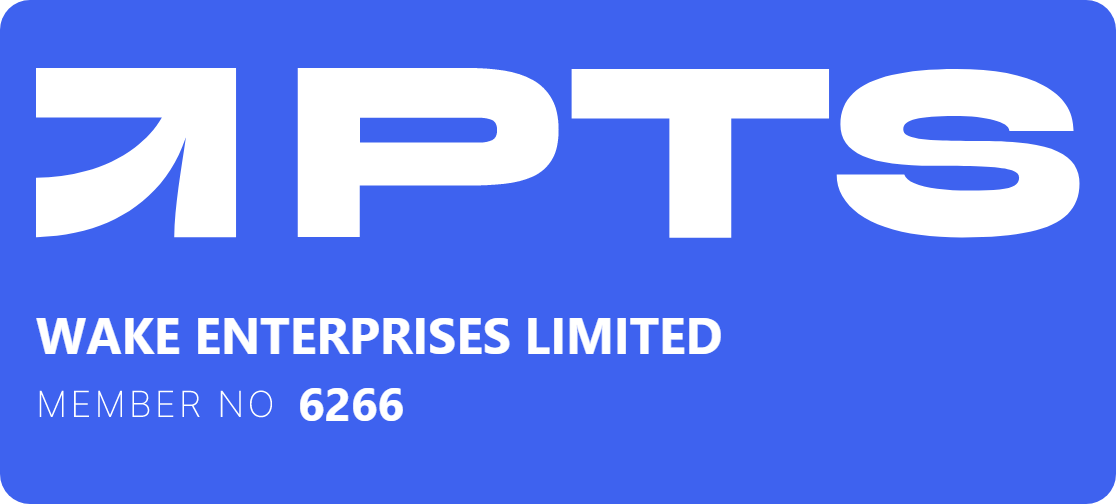How to Keep Your Travel Clients Updated and Informed
How to Keep Your Travel Clients Updated and Informed

In the busy world of travel advisory, the difference between a one-off booking and a lifelong client often hinges not on finding the cheapest fare, but on how well you communicate. For those entering the travel business as a homeworker or independent consultant, mastering client communication in travel is a cornerstone of sustainable success.
In this post we’ll walk you through a robust framework for keeping your clients updated and informed—so you build trust, encourage repeat business, generate referrals and position yourself as the go-to adviser.
1. Why client communication in travel matters
When you’re working as a travel homeworker, your reputation is built entirely on how well you manage relationships remotely. Communication isn’t just a nicety—it’s a strategic differentiator.
- Clients travel in environments of high uncertainty: last-minute schedule changes, weather disruption, visa delays. If you are the one they hear from, you become their trusted go-to.
- Transparent, timely updates reduce anxiety, minimize frustration and enhance the overall travel experience.
- Consistent, proactive communication = higher likelihood of repeat bookings and referrals. For example, one luxury travel resource emphasises that “consistent communication is the backbone of any successful client retention strategy.”
- As a homeworking travel professional you don’t have the benefit of a high-street office or walk-in traffic. Your service quality—and your communications—must feel professional, personal and reliable.
In short: your ability to master client communication in travel will set you apart, help you build a loyal client base, and fuel your homeworking travel business.
2. Build the foundation: set expectations early
Before a trip is booked, you must set the tone for how communication will flow. This is especially important for independent or homeworker travel agents.
Make an onboarding checklist
When you first engage a client:
- Confirm their preferred communication channel (email, WhatsApp, SMS, phone call).
- Clarify your typical response times (e.g., “within 24 hours”, “urgent matters within 1 hour”).
- Explain what kinds of updates they will receive (e.g., booking confirmations, itinerary changes, destination alerts).
- Agree what you will not proactively send (for example you may not send every minor change unless it affects the client’s experience).
- Provide a simple “how to reach me” guide: share your work-hours (even if flexible), emergency contact process, and fallback plan if you are travelling or outside service hours.
By doing this you establish that you as the travel homeworker are in control of communications—not reactive and not invisible.
Create a communication cadence
Consider a schedule:
- Immediately after booking: send confirmation email with all details.
- One week before travel: send a “pre-trip pack” with key reminders (check-in links, weather, airport transfer, local contacts).
- 24 hours before departure: send final specific alert (flight number, terminal, time).
- During travel: consider a “just checking in” message (if appropriate).
- Post-trip: send feedback request, thank-you message, and suggestions for next trip.
Having a predictable cadence reassures clients and demonstrates professionalism.
3. Use the right tools to streamline communication
Working as a travel homeworker means you are probably juggling multiple clients, suppliers, changes and documents. Having the right tools makes a huge difference.
Centralised platforms
Using a communication hub (for example combining email, SMS and messenger) helps you keep track of every interaction, avoid duplication and ensure nothing falls through the cracks. One article notes that “centralised communication platforms … manage all client interactions from one place.”
Automated alerts
Set up automated notifications for key events: flights changed, hotel upgrades, transfers arranged. Automation takes the ‘human forgetting’ element out of the loop and allows you to scale as a homeworking agent.
Interactive itineraries
Rather than just sending a PDF, you can send itineraries with links, maps, QR codes, local tips, emergency numbers etc. The article on improving client communication highlights adding interactive elements such as maps and QR codes to make itineraries more engaging.
CRM and segmentation
As you grow your business you’ll want to categorise clients, track their preferences, past trips, and communication history. The luxury-travel article stresses that detailed client profiles and CRM usage are essential. For a travel homeworker this may start simple but build over time.
4. Keep clients informed at all stages
A successful client communication plan in travel includes pre-travel, during travel and post-travel phases.
Pre-travel
- Booking confirmation: Immediately send all relevant documents: flights, accommodation, transfers, check-in requirements, visa/insurance reminders.
- Orientation email: Provide a short “what to expect” overview of destination, cultural norms, weather, packing tips, currency.
- Final check-in: 48-24 hours prior to departure send a short message summarising flight numbers, terminal, time, your contact mobile number for emergencies.
- Contingency plan: Outline what you will do in case of disruption (e.g., flight delay). Clients feel much better if you’ve said “If something goes wrong, here’s plan B.”
- Trust building: As a travel homeworker you may not meet face-to-face; so reinforcing your professionalism, responsiveness and reliability here is vital.
During travel
- Proactive alerts: If you see delays, cancellations, route changes, local protests/weather warnings—send a short message/alert. “Just to let you know…” shows you’re monitoring on their behalf.
- Check-in message (optional): Especially for higher-value clients or longer trips, you might send a “Hope you’re having a great time, let me know if you need anything” 24-48 hours into the trip.
- Local support: Make sure they know how to contact you (or your partner) if something arises. Even simple reassurance “You have my 24/7 contact number should anything change” builds trust.
Post-travel
- Welcome home email: Send a friendly message within 1-2 days of return.
- Feedback survey: Ask what worked, what didn’t, what could be better. Feedback is a goldmine.
- Future suggestions: Based on what you’ve learned, suggest a next-step trip or an upgrade offer. Recognising their preferences and referencing the past trip strengthens the relationship. This approach is widely recommended in the luxury travel retention world.
- Stay on radar: Even when they’re not travelling, send occasional value-adds: e.g., “Just saw a great offer on Bali luxury lodges — thought of you”. This keeps you front-of-mind.
5. Use personalisation and relevance
Generic “Dear travel customer” emails will not cut it. As a travel homeworker you must bring the personal touch to your communications.
- Use the client’s name, reference details of their previous trips, their preferences (e.g., “I recall you mentioned you love gastronomy, so here’s a restaurant guide for Lisbon”).
- Segment clients: frequent travellers vs first-timers vs family groups vs solo explorers. Tailor your messaging accordingly.
- Speak to what matters: worry about airport logistics for business travellers; talk about family friendly activities for family groups; highlight solo-traveller safety and connection for solo clients.
- Tone: For some clients a relaxed friendly tone is fine; for others, a more formal professional tone works better. Adapt.
Personalisation in client communication in travel builds rapport and sets you apart from automated ‘mass-agent’ services.
6. Maintain transparency and over-communicate when necessary
One of the traps many travel homeworkers fall into is under-communicating—assuming the client “knows”. But in travel things change — and the more you let your clients feel you’re ahead of them, the more they trust you.
- If there is a delay, don’t wait for them to ask: send an update proactively.
- If a supplier says “we’re waiting for final confirmation”, tell the client you’re still on it and will update by X.
- Avoid jargon: use simple, clear language. For example, explain “You’ll land at Terminal 5 and your transfer van will be signed with your name — I’ll text you 24 hrs before departure”.
- Provide real-time resources: apps, WhatsApp groups, local contacts. Let them know you’re accessible and you’ve thought ahead.
In short: being the reliable communicator sets you above many “booking agents”—you become a trusted travel partner.
7. Design a communication playbook for your travel homeworker business
If you’re building your business as a travel homeworker, consistency matters. Develop your own playbook:
| Stage | Communication | Method | Timing |
|---|---|---|---|
| Booking confirmed | Booking summary email | Immediately after payment | |
| Pre-trip pack | Destination guide | Email + link | 7–10 days before departure |
| Final alert | Check-in & transfer info | SMS / WhatsApp | 24–48 hours before departure |
| In-trip check-in | Optional "how it's going" message | SMS or WhatsApp | Mid-trip for longer journeys |
| Issue alert | Delay/cancel update | SMS + phone call | Immediately when discovered |
| Post-trip follow up | Thank you + feedback | Within 1–2 days of return | |
| Future suggestions | Tailored next-trip ideas | Within 1–2 weeks of return |
By automating where you can, yet personalising each message, you’ll scale your travel homeworker business while still delivering premium service.
Jamie Says:
“Great communication turns bookings into relationships. When your clients know they can rely on you — from their first enquiry to the moment they land home — you stop being ‘just another travel agent’ and become their trusted expert. That’s what makes homeworking in travel so rewarding.”
8. Measure, learn and improve your communication
Even as a solo or home-based travel consultant you should treat this like a business operation. Effective client communication in travel isn’t static.
- Track open rates of your pre-trip and post-trip emails: are clients reading them?
- Keep a log of any communication breakdowns (e.g., late updates, missed messages). What triggered them? How can you avoid them next time?
- Gather client feedback about the clarity and timeliness of your communications. What did they like? What could be better?
- Review and refine your playbook quarterly: are there stages you can automate? Are there messages you can make more personal?
- Consider using simple analytics: which channel do your clients prefer? Which time of day do they respond best?
Remember: your goal as a travel homeworker is not just to win clients but to keep clients.
The better your communication, the more likely they come back and refer others.
9. Common pitfalls to avoid
Here are some traps that travel homeworkers frequently fall into—and how to sidestep them:
- Assuming no news is good news: Silence can feel like neglect. Always send acknowledgment even if there’s nothing to update.
- Overloading clients with unnecessary detail: While being informative is good, too many emails or overly long PDFs will overwhelm. Keep communication purposeful.
- Failing to plan for emergencies: If you don’t have a backup plan for urgent changes, you risk client frustration.
- Neglecting the “non-booked” phase: Communication doesn’t begin at booking. Staying in touch even when they’re not travelling builds trust and leads to future bookings.
- Relying only on email: Some clients prefer SMS or WhatsApp. Ask their preference and respect it.
10. Conclusion: Why this matters for your homeworking travel career
If you’re stepping into the travel industry as a homeworker, you’re not just selling trips—you’re selling confidence, trust and peace of mind. Excellent client communication in travel is the vehicle through which you deliver that.
By adopting the frameworks above—setting expectations early, using the right tools, being timely and personal, and measuring what works—you’ll position yourself as the adviser clients want to go to. As you build your brand, those repeat clients and referrals will become the engine of your business.
Embrace the communication advantage. Your clients will feel it. Your business will grow because of it. And as a travel homeworker, you’ll be forging a pathway to long-term success in an industry that rewards connection as much as destination.
Key takeaways:
- Start with a clear client communication plan and share it.
- Combine automation (to scale) with personal touches (to differentiate).
- Be proactive, transparent and timely — especially as a homeworking agent.
- Build your business not just on one trip, but on the relationship.
- Regularly review what works, refine your approach, and keep improving your communication systems.
The Power of Communication in Building a Travel Career
If you’re working as a travel homeworker — or thinking about becoming one — mastering client communication in travel is your most valuable skill. Every update, reassurance, and follow-up message builds loyalty and trust.
The travel professionals who succeed are the ones whose clients feel genuinely cared for. By keeping clients informed and engaged, you’ll build a business that grows through word-of-mouth and reputation — the best marketing any travel homeworker could wish for.
Ready to Build a Better Travel Business?
If this post has inspired you, maybe it’s time to start your own travel career — one where communication, care, and creativity are your greatest strengths.
At The Independent Travel Consultants, we empower people from all walks of life to run successful travel businesses from home. You’ll receive training, mentorship, access to ATOL-protected suppliers, and the freedom to grow at your own pace.
📞 Call us or complete our quick
enquiry form today to find out how you can launch your travel homeworking journey with confidence and support.
About Jamie Wake
Jamie is the founder of The Independent Travel Consultants and a passionate advocate for empowering others to succeed in the travel industry through honesty, training, and community. He brings decades of travel experience, a focus on doing things differently, and a strong commitment to supporting UK-based homeworkers.












